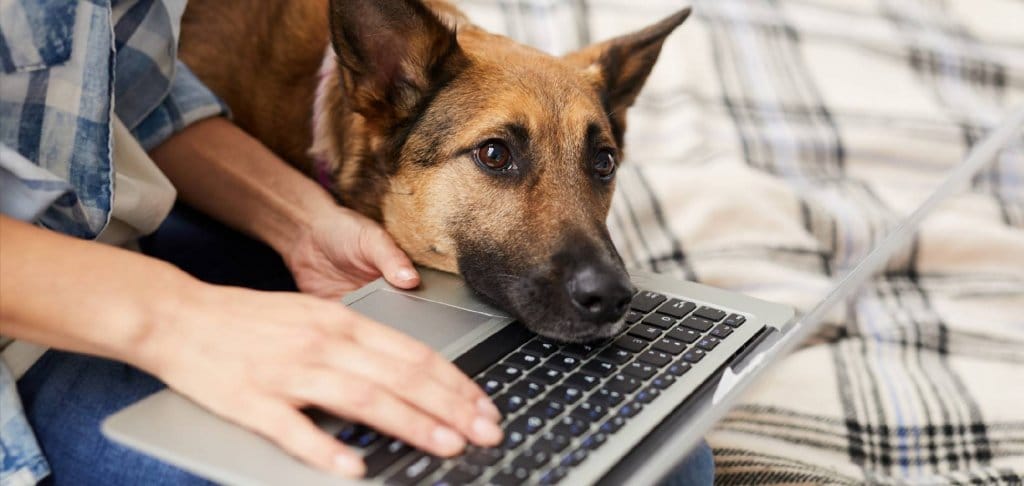Imagine this: It’s post-spring break, and clients are coming in to pick up their pets from boarding. While waiting for the kennel staff to bring up Fluffy to the front, the receptionist asks Mrs. Jones about her vacation.
“Oh we went on a lovely cruise….at least it was nice up until the end when I got this awful cold. They told me I should stay home with all this ‘corolla virus’ hocus pocus, but I just couldn’t wait to get Fluffy.”
Just as Mrs. Jones takes Fluffy’s leash and signs her credit card receipt, she sneezes all over the reception desk, then gives the pen back to the receptionist, who immediately turns white and holds the pen like she was just handed a fecal sample. “Anyway thanks for taking care of Fluffy!” Mrs. Jones yells, as she hacks up a lung walking through the jam-packed lobby and out the front door.
We all want to hope that we don’t have a Mrs. Jones in our practice. Then again we also hope that clients will one day stop using coconut oil for flea prevention. The reality is that there’s no way to predict if or when COVID-19 could sneak into your hospital, so the best option to keep both your staff and clients safe is to — cue Lion King soundtrack — be prepared.
COVID-19 practice survival tips
1: Know the Facts
With all the hype surrounding this new outbreak, it’s easy to forget what we tell our clients and get carried away with Dr. Google. But before busting out the HAZMAT suits, let’s focus on what we know:
- The Center for Disease Control says that there are 3 key symptoms connected to COVID-19: Fever, cough and difficulty breathing.
- The virus spreads mainly from person-to-person when an infected person coughs or sneezes.
- However it might be possible in some rare instances to contract it by touching an infected surface (i.e. Mrs. Jones’ contaminated pen).
- Symptoms can appear up to 14 days after exposure.
- There is no specific treatment but medical care can relieve symptoms, and most patients are able to make a full recovery.

2: Assess the risks
As an employer, you have a responsibility to consider all the facts logically and decide if and when you need to take action. Consider which roles or job activities might put staff at higher risks for sources of infection. Are they all essential, or could they be modified to limit exposure?
Locking potentially infected staff and/or clients in the isolation ward is generally frowned upon. But perhaps you can encourage clients to use the prescription request section in your Vet2Pet app (or home delivery feature if you have an online pharmacy) to decrease unnecessary phone calls, traffic, and germs.
Your local conditions and confirmed cases in your area will also determine the level of exposure that you need to prepare for. Stay informed about the threat in your hospital’s community and any city- or county-wide restrictions.
3: Update your policies
Actively encourage staff members who are sick or those with sick family members to stay home. Have your sick leave/time off policies up-to-date in advance with clear guidelines regarding who to contact, if it will be paid or unpaid, and if there will be restrictions in order to return to work.
A situation like this might also bring up additional considerations, such as if schools are cancelled and child care is unavailable. Be prepared to field those questions and apply a consistent policy for everyone.
It might also be a good idea to check with your business insurance policy to find out what, if any, liability the hospital might have in the spread of illnesses such as COVID-19, either with clients or staff. Include that information in your Infectious Disease Outbreak Response Plan, along with information regarding nearby facilities that offer testing for staff.

4: Train your staff
Educate your staff members on the facts of the situation, and let them know what the hospital’s plan is to keep everyone safe. Allow them to ask questions so everyone can feel informed and involved. Important topics to discuss include:
- Good hygiene procedures — Proper hand washing techniques, using hand sanitizer before and after every room, wearing disposable gloves when appropriate, not watering down the soap when you can’t find the new bottles…
- Social distancing strategies (introverts, rejoice!) — Avoiding close physical contact (e.g., shaking hands) or other best practices when greeting clients.
- Appropriate disinfection procedures — Use disposable wipes or paper towels and broad spectrum cleaners (sorry, this is not a job for apple cider vinegar). Here is a list of COVID-19 fighting cleaning agents, but it is a good idea to check with the manufacturer of your hospital’s cleaning product to confirm it will be sufficient. Clean high-touch items such as doorknobs, chairs, check-out counters, credit card terminals, communication devices, clipboards, coffee stations, and common areas.
- AccCreate a specific, documented cleaning protocol and schedule with the above information so there is clear delegation and oversight. Confirm all of the above with outside janitorial services as well, if needed.
- Communication protocols — Make sure staff members know how they can expect to receive updated information, as well as exactly who to go to after Mrs. Jones comes in and panic ensues.
5: Plan for the worst
But don’t panic! The goal in preparing now is to cover all your bases and create logical responses to the various scenarios you might encounter.
- Cross-train staff now — Since there is a very high chance that employee absences will increase, start teaching staff members to perform essential functions. Determine the “core competencies” that are necessary to maintain business functions and focus on getting those tasks covered so that it will lessen the blow if someone calls out.
- Brace for supply distribution to be affected — This does not — and I repeat — NOT mean to go stock up on toilet paper as if this is a Giardia outbreak. But it does mean to consider your essential items (i.e. white goods, prescriptions, food) and have a list of alternate suppliers.
- Be proactive in calming client fears — Undoubtedly your phones will be going crazy with pet owners who are scared for their pets and scared for themselves. A great way to get ahead of this is to write a blog post that you can share on your website, social media, or in an email blast that addresses their concerns and your hospital’s response.
- Prepare a business closure plan — Finally, determine at what point the practice would absolutely have to close, and who will make that decision. Prepare a detailed checklist that includes notifying staff and clients. Your App Success Coach can help you create a custom Push Notification in your Vet2Pet app that you can have on “stand-by” to send your clients with any important announcements.

Hopefully you will never have to use your emergency plan. But it’s better to have one than to have the entire team scrambling and hyperventilating after Mrs. Jones leaves. Our Vet2Pet team is standing by to help you prepare and utilize your app as part of your survival guide. Schedule a time with our coaches here!




